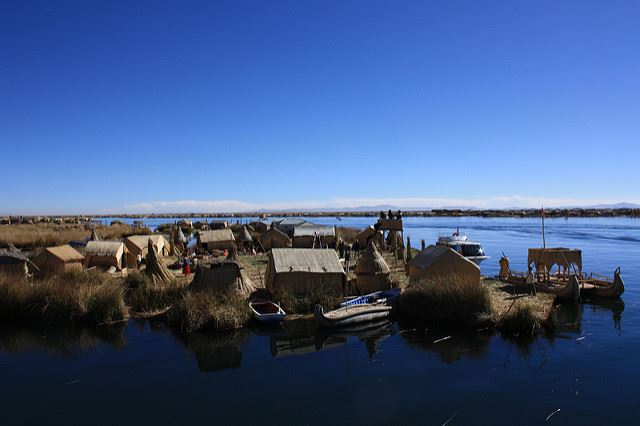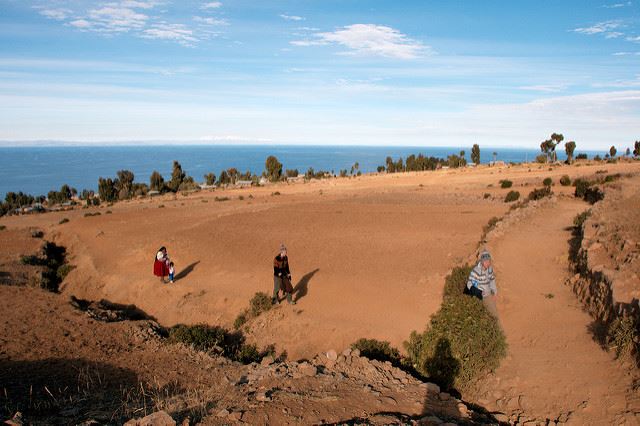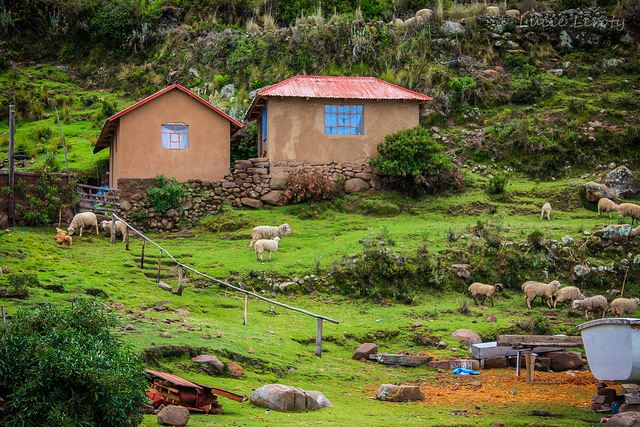
What to expect at a Lake Titicaca homestay
With its picture-perfect landscape, unique traditional communities, and claim-to-fame as the world’s highest navigable lake (over 12,000 feet above sea level), it’s no wonder Lake Titicaca is one of Peru’s most popular destinations. But with several islands, communities, and lodging options, understanding how a cultural Lake Titicaca tour experience works can be confusing for the uninitiated. Here we break down the basics so you know what to expect and how to plan for a visit to this highland region.
Puno is the lake’s main port town and primary launching point for Lake Titicaca excursions. The town is connected by scenic bus routes to Arequipa, the Colca Canyon, and Cusco. If arriving by air, you’ll land in the city of Juliaca, about 30 miles outside Puno. Because Lake Titicaca is shared between Peru and Bolivia, it can also be accessed by the Bolivian town of Copacabana.
The three most commonly visited Lake Titicaca Islands are: Uros, Amantani, and Taquile. The most common tour possibilities are:
A full-day boat tour that will take you to visit all three islands;
A two-day tour, with an overnight homestay at either the Amantani Island or the Taquile Island; note that you will still visit all three islands;
A three-day tour, with an overnight homestay on both the Amantani Island and the Taquile Island; note that you will still visit Uros and that you can extend your homestay on any of the other two islands;
An overnight on the privately-owned island of Isla Suasi at an eco-resort; note you will still visit the Uros and briefly explore Taquile Island.
The three islands mentioned above are very distinctive with unique characteristics, which can be difficult to believe since they are within close proximity (a one to three hour boat ride apart) and reside in the same lake. Below we describe the highlights of each island.

Uros - Andrea Stefanini
Uros is made up of over 40 floating, man-made islands all constructed from the local tortora reed that grows in the lake. These buoyant reeds form the base of the islands, and are also the main material used for boats, houses, furniture, handicrafts, and even food. The Uros people speak mainly Ayamara and many still inhabit the islands, however, the population has decreased significantly over the past century due to migration to the mainland.
A common opinion is that the Uros islands are fairly touristic; however, they are well-worth visiting to truly understand how this particular native civilization has survived on the lake for centuries. After speaking with the locals, I understood that many of them truly appreciate the tourism, as it allows them to financially adjust to the modern world that is inevitably affecting them, and that they also enjoy sharing their customs and way of life with others. The Uros Islands are located just a couple miles offshore Puno.

Amantani - Christian Haugen
Island Amantani is a proper island that houses close to 3,800 people, distributed among nine communities. The local culture is dominated by the pre-Inca Aymara people; although residents primarily speak Quechua (Spanish is also commonly spoken on all the islands).
Most people who visit Amantani do so as part of a homestay, meaning they will spend the night in the home of a local family (in the photo above SA Expeditions' Destination Expert Staci Steele poses with her homestay family). As the most isolated and least developed of the islands, Amantani is the best place to visit for an authentic Lake Titicaca overnight experience. Life on the island is very rudimentary and overnight visitors eat with a local family and stay in a designated guest room within or attached to the main family home, which typically does not have proper running water, plumbing, or electricity.
The locals on the island survive off of their own land which is ideal for growing quinoa, potatoes, oka (a sweet, carrot-like potato), green beans, and tomatoes. Although not very common and generally done on special occasions, the islanders will also eat meat (either fish or local livestock). They also are very handy with textiles, which they sell to those visiting the island to increase access to income (money isn’t typically used among locals on the island, although currency has become a necessity to interact with the outside world).
Highlights of an Amantani homestay:
Quiet, cultural experience that is off the beaten tourist track;
Hike to the island’s two highest hills to visit the ruins Pachatata (Father Earth) and Pachamama (Mother Earth). The hike to these ruins can be challenging due to altitude effects, but offer incredible views of both the Peruvian and Bolivian sides of the extensive Andean Mountain range;
Opportunity to participate in a local dance and music celebration in the evening, including traditional dress.

Island Taquile
Island Taquile, next door to Amantani, is a slightly smaller island with only about 2,000 inhabitants, distributed among six communities. Taquile has received a larger amount of tourism for a longer period of time than Amantani, and the community has been much more successful in its entrepreneurial initiatives. For example, there are several basic restaurants on the island, and Taquile textiles and weavings are known around the world. Many locals have access to solar power and a teacher from the mainland comes to teach at the local school. The main economic activities on Taquile are tourism, agriculture, and textile work.
Like at Amantani, island leaders at Taquile use a rotation system so each household that hosts visitors has equal access to incoming tourism dollars. This adds a sense of community equality, but also means no one homestay experience is the same, since each visitor will have a different host family and home situation with slightly different amenities (for example, a few houses have showers, others do not).
The Quechua-speaking locals manage a delicate balance between embracing the Western world while holding strongly to cultural traditions. For example, on Taquile locals wear hand-made clothing designed and selected specifically to indicate social position and marital status: those married or promised to marry wear different patterns and colors to distinguish themselves from those who are single (single generally means brighter and bolder colors), and those who have governing powers on the island have different hats to distinguish them from those who don’t.
Highlights of an Amantani homestay:
Interaction with local community and exposure to textile culture;
Beautiful scenery, prefect for photography buffs;
Freedom to explore the island and hike among terraces and ruins.
Keen to see Lake Titicaca for yourself? Check out our 12-day Andean Highlights and 11-day Andes and Uyuni tours. Or speak to one of our Destination Experts about crafting the bespoke vacation of your dreams.
Credit to Pablo Andres for the cover image of this blog.